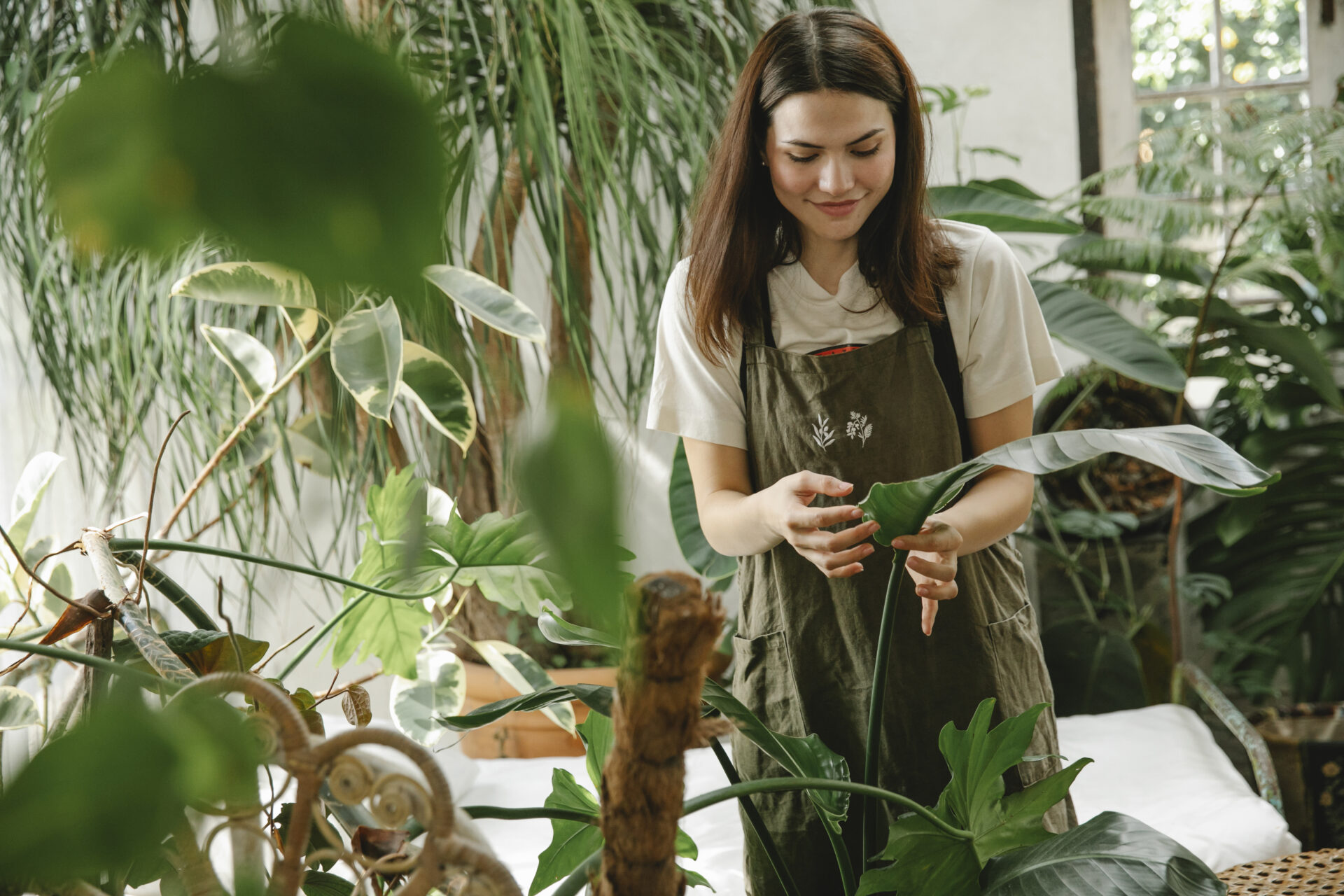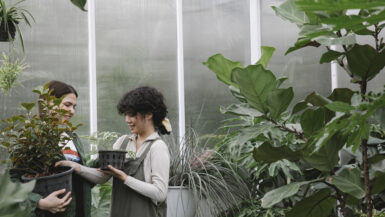Welcome to “The Ultimate Guide to Indoor Vertical Garden Maintenance,” an essential resource for gardening enthusiasts and green-thumbed individuals. In this comprehensive article, we will explore indoor vertical gardening, an innovative and space-saving approach to cultivating plants within the comforts of your home. We will focus on maintaining a thriving and sustainable vertical garden, including proper plant selection, optimal lighting and watering techniques, pest management, and essential troubleshooting tips.
As we explore these core topics, you will gain valuable insights and expert advice that will empower you to create and maintain a flourishing indoor vertical garden, bringing the beauty and benefits of nature into your living space. So, let’s embark on this exciting journey together and discover the secrets to unlocking the full potential of your indoor vertical garden.
Optimal Lighting and Temperature Conditions
Creating a thriving indoor vertical garden requires thoroughly understanding the ideal lighting and temperature conditions for your chosen plants. This section will explore the essential factors contributing to a healthy and productive indoor environment, ensuring your vertical garden flourishes year-round. From selecting the proper light source to maintaining consistent temperature levels, these critical elements will provide the foundation for your plants’ success.
Choosing the Right Light Source for Your Indoor Vertical Garden
Lighting plays a significant role in plant growth and development, making it essential to select the appropriate light source for your indoor vertical garden. Natural light from windows may be sufficient for some plants, but others may require supplemental artificial lighting. To determine the best lighting solution, consider the specific light requirements of your chosen plants.
Fluorescent lights, such as compact fluorescent (CFL) bulbs or T5 tubes, are an energy-efficient choice for most indoor gardens. They emit a balanced spectrum of light that promotes healthy growth while generating minimal heat. Alternatively, LED grow lights offer a customizable spectrum, allowing you to tailor the light output to your plants’ needs. These energy-efficient options also produce less heat, reducing the risk of overheating your plants.
Maintaining Ideal Temperature Levels
Temperature plays a crucial role in the overall health of your indoor vertical garden. Most plants thrive in temperatures ranging from 65-75°F (18-24°C), with cooler temperatures at night. Monitoring and maintaining consistent temperature levels is essential to prevent plant stress or damage.
To achieve this, consider investing in a digital thermometer and a thermostat-controlled heating or cooling system. This will allow you to maintain a consistent temperature and create an optimal environment for your plant’s growth. Additionally, ensure proper air circulation by using a small fan to dissipate excess heat and maintain a consistent temperature throughout your vertical garden.
Maximizing Light Exposure and Temperature Control with Container Selection
The choice of containers for your indoor vertical garden can significantly impact its overall success. Consider exploring our Selecting the Perfect Indoor Vertical Garden Containers guide to maximize light exposure and optimize temperature control. This resource will provide valuable insights into choosing the ideal containers to promote healthy plant growth and create an efficient, visually appealing indoor garden.
Monitoring and Adjusting Lighting and Temperature Conditions
Monitoring and adjusting lighting and temperature conditions is crucial to maintaining a successful indoor vertical garden. Periodically assess your plants’ health and appearance and adjust the light source or temperature as needed. By staying proactive and responsive to your plants’ needs, you can cultivate a thriving indoor environment that provides year-round enjoyment and beauty.
With a solid understanding of your indoor vertical garden’s optimal lighting and temperature conditions, you are well-equipped to create a flourishing and sustainable space. As you continue to nurture your plants and refine your maintenance techniques, your indoor vertical garden will thrive, bringing the joys of nature into your home.
Nutrient Management in Vertical Garden Systems
Maintaining a thriving indoor vertical garden ensures your plants receive the necessary nutrients for their growth and development. In this section, we will delve into the vital components of nutrient management in vertical garden systems, providing you with essential knowledge and practical tips to maximize your garden’s potential.
Understanding the basics of plant nutrition and selecting the appropriate growing medium and fertilizer are key elements that will empower you to create a flourishing and productive indoor vertical garden.
The Importance of Proper Plant Nutrition
Plants require essential nutrients to grow and thrive, including macronutrients such as nitrogen, phosphorus, and potassium and micronutrients like iron, manganese, and zinc. Providing your plants with these vital nutrients in a vertical garden system is crucial to promoting healthy growth, preventing deficiencies, and ensuring a balanced and flourishing garden. Understanding the specific nutritional needs of your chosen plants will allow you to tailor your nutrient management approach, resulting in a vibrant and thriving indoor garden.
Selecting the Right-Growing Medium
The growing medium you choose for your indoor vertical garden plays a significant role in nutrient management, as it can either enhance or hinder the availability of essential nutrients. High-quality potting mixes, coconut coir, and expanded clay pebbles are popular options for vertical gardens due to their excellent water retention and aeration properties.
These materials also provide a stable environment for your plants, promoting healthy root development and nutrient uptake. When selecting a growing medium, consider your plants’ specific needs and compatibility with your vertical garden system.
Fertilizing Your Indoor Vertical Garden
In addition to selecting the right growing medium, providing your plants with the appropriate fertilizer is essential for successful nutrient management. Various plant fertilizers are available, including organic options such as compost, worm castings, or fish emulsion and synthetic alternatives like slow-release granules or water-soluble liquid fertilizers.
Choosing a fertilizer that meets your plants’ specific nutritional requirements and is compatible with your chosen growing medium is essential.
When applying fertilizer to your indoor vertical garden, always follow the manufacturer’s guidelines to prevent over-fertilization, which can harm your plants and negatively impact their growth. Regularly monitoring your plants for signs of nutrient deficiencies or excesses, such as yellowing leaves or stunted growth, will help you make timely adjustments to your fertilization regimen, ensuring your vertical garden’s overall health and well-being.
Optimizing Nutrient Management Techniques
As you nurture your indoor vertical garden, continually refining and optimizing your nutrient management techniques will promote a thriving and sustainable environment. This may involve experimenting with different growing media, adjusting your fertilization schedule, or even incorporating beneficial microorganisms to enhance nutrient availability.
By staying attentive to your plants’ needs and adapting your approach as needed, you will cultivate a flourishing indoor vertical garden that provides beauty, enjoyment, and fresh produce for years to come.
With a comprehensive understanding of nutrient management in vertical garden systems, you are well-prepared to create a thriving and productive indoor garden. Ensuring your plants receive the essential nutrients will foster a vibrant and flourishing environment that enhances your living space and provides the joys of gardening all year round.
Choosing the Best Plant Species for Vertical Gardens
Selecting the perfect plant species for your indoor vertical garden is crucial in establishing a successful and sustainable ecosystem. By carefully considering light requirements, growth habits, and compatibility with other plants, you can create a thriving and visually appealing garden that meets your unique needs and preferences.
This section will delve into the essential aspects of choosing the best plant species for vertical gardens, providing expert tips and recommendations to guide you on your path to a flourishing indoor oasis.
Assessing Light Requirements and Environmental Conditions
The first step in selecting the best plant species for your indoor vertical garden is to assess your space’s available light and environmental conditions. This will help you determine the most suitable plants based on their needs. For example, if your vertical garden receives ample natural light, consider sun-loving plants like succulents, herbs, or ferns.
Conversely, opt for shade-tolerant species such as pothos, philodendrons, or snake plants if your space has limited light. Additionally, consider your space’s temperature and humidity levels, as some plants may require specific conditions to thrive.
Considering Growth Habits and Maintenance Requirements
Another critical factor to consider when choosing plant species for your vertical garden is their growth habits and maintenance requirements. Select plants with similar care needs to simplify maintenance tasks and promote a harmonious and sustainable environment.
For instance, choose plants with similar watering and fertilization needs to streamline your care routine. Additionally, consider plants with compact growth habits or those that can be easily pruned to maintain their size and shape, ensuring your vertical garden remains visually appealing and manageable.
Exploring Plant Compatibility and Design Elements
Creating a visually striking and harmonious indoor vertical garden involves considering plant compatibility and design elements. Select plants with complementary colors, textures, and forms to create an aesthetically pleasing arrangement.
You can also use plants with varying heights and growth habits to add depth and visual interest to your vertical garden. When selecting plant species, consider their compatibility regarding root space, nutrient requirements, and pest resistance to ensure a thriving and sustainable ecosystem.
Experimenting with Edible and Ornamental Plants
Indoor vertical gardens provide an excellent opportunity to experiment with edible and ornamental plants. Edible plants like herbs, leafy greens, or even small fruit-bearing plants can add a functional element to your vertical garden, allowing you to enjoy fresh produce year-round.
Conversely, ornament plants can bring color, fragrance, and visual interest to your space. By combining both types of plants, you can create a diverse and multi-functional indoor vertical garden that is beautiful and practical.
As you explore the vast array of plant species suitable for vertical gardens, remember that the key to success is selecting plants well-suited to your specific environment and care preferences. By carefully considering light requirements, growth habits, and compatibility, you can create a thriving, visually appealing indoor vertical garden that will enhance your living space and provide endless enjoyment.
So, take the time to research, experiment, and ultimately choose the perfect plant species for your indoor vertical garden – your efforts will be rewarded with a lush and vibrant indoor oasis.
Proper Watering Techniques for Indoor Gardens
Watering is crucial to maintaining a successful indoor vertical garden. Providing the appropriate amount of water and following proper watering techniques can significantly impact your plants’ overall health and productivity.
In this subsection, we will explore the essential factors contributing to effective watering practices, including assessing your plants’ specific needs, understanding the role of humidity, and utilizing various watering methods. Mastering these techniques ensures your indoor vertical garden remains vibrant and flourishing throughout the year.
Assessing Your Plants’ Watering Needs
The first step in establishing proper watering techniques for your indoor vertical garden is to understand the specific watering needs of your chosen plants. Different plants have varying water requirements based on their natural habitat, root structure, and growth stage.
For example, succulents and cacti prefer a drier environment, while tropical plants often require more frequent watering. Researching your plants’ specific needs and observing their growth patterns and appearance will help guide your watering practices and promote a thriving indoor garden.
Understanding the Role of Humidity
Humidity plays a significant role in the overall health of your indoor vertical garden, as it can impact the rate at which your plants lose water through transpiration. Higher humidity levels can generally reduce the need for frequent watering, while lower humidity levels may require more frequent watering to maintain optimal plant health.
To ensure proper humidity levels for your plants, consider investing in a hygrometer to monitor the humidity in your space and make adjustments as needed. Humidifiers, dehumidifiers, or misting systems can help maintain appropriate moisture levels to support the well-being of your indoor vertical garden.
Utilizing Various Watering Methods
Several watering methods are available to cater to the unique needs of your indoor vertical garden, including manual watering, drip irrigation systems, and self-watering containers. Manual watering with a watering can or spray bottle allows for precise control over the amount of water your plants receive. However, it can be time-consuming and may not provide consistent plant moisture levels.
Drip irrigation systems deliver water directly to your plant’s roots, ensuring consistent moisture and minimizing water waste. This method is a popular choice for vertical gardens, as it can be easily customized to meet the specific needs of each plant. Self-watering containers are another option, featuring a built-in reservoir allowing plants to take up water as needed. This method can simplify maintenance tasks and provide a consistent plant water supply.
Monitoring and Adjusting Watering Practices
Regularly monitoring your plants’ appearance and growth can provide valuable insights into the effectiveness of your watering practices. Signs of overwatering may include yellowing leaves, wilting, or root rot, while underwatered plants may exhibit dry, crispy leaves or stunted growth. By paying close attention to your plants and adjusting your watering techniques accordingly, you can create a thriving and sustainable indoor vertical garden.
Mastering proper watering techniques is essential for maintaining a successful indoor vertical garden. Understanding your plants’ specific needs, considering the role of humidity, and utilizing various watering methods can ensure a thriving and vibrant indoor garden. As you refine your watering practices, your indoor vertical garden will reward you with lush, healthy plants that enhance your living space and provide a sense of accomplishment and satisfaction.
Pruning and Pest Control for Healthy Growth
This subsection will delve into the essential aspects of pruning and pest control, two crucial components of maintaining a healthy and thriving indoor vertical garden. Proper pruning techniques encourage robust growth, while effective pest control measures ensure your plants remain strong and disease-free. From understanding the basics of pruning to implementing preventative measures and treating common pests, these vital elements will empower you to cultivate a flourishing and vibrant indoor vertical garden.
The Art of Pruning: Encouraging Healthy Growth
Pruning is an essential practice that promotes healthy growth and maintains the aesthetic appeal of your indoor vertical garden. By strategically removing dead or damaged foliage and controlling the size and shape of your plants, pruning can improve air circulation, stimulate new growth, and reduce the risk of disease. Familiarizing yourself with your plants’ specific growth habits and requirements is essential to successfully pruning them.
Begin using clean, sharp pruning shears to remove dead or yellowing leaves and damaged or diseased branches. This will redirect energy and resources to healthy growth and prevent the spread of disease. Additionally, trim back any overly long or unruly stems to maintain your plants’ desired shape and size.
Always make clean cuts at a slight angle, just above a leaf node or bud, to encourage new growth and prevent damage to the plant. Regularly monitoring your plants and pruning as needed can result in a thriving and visually appealing indoor vertical garden.
Preventative Measures: Establishing a Pest-Free Environment
Preventing pest infestations is crucial to maintaining a healthy indoor vertical garden. By implementing preventative measures and closely monitoring your plants, you can minimize the risk of pests and create a thriving, disease-free environment.
Start by ensuring that your plants receive the proper care, including adequate light, water, and nutrients. Healthy plants are less susceptible to pest problems. Additionally, regularly inspect your plants for signs of pests, such as discolored or distorted leaves, small insects, or webbing, and address any issues promptly to prevent further damage.
Other preventative measures include maintaining proper air circulation around your plants, avoiding overcrowding, and quarantining new plants before adding them to your indoor vertical garden. By consistently implementing these practices, you can create a substantial, resilient garden less prone to pest infestations.
Managing Common Pests: Identification and Treatment
Despite your best efforts, pests may still enter your indoor vertical garden. Early detection and prompt treatment are essential to minimize damage and maintain the overall health of your plants. Some common pests that may affect indoor gardens include aphids, spider mites, whiteflies, and fungus gnats.
To manage these pests effectively, it is essential first to identify the specific pest affecting your plants. Once identified, select a safe treatment method for your plants and the surrounding environment. Options may include manual removal, such as wiping or washing infested leaves, using insecticidal soap or neem oil, or introducing beneficial insects like ladybugs or lacewings to control the pest population.
Always follow the treatment product’s instructions carefully and monitor your plants closely for signs of improvement or further infestation.
Mastering the art of pruning and implementing effective pest control measures can foster a vibrant and healthy indoor vertical garden. Regular maintenance and attention to detail will ensure that your garden remains strong, resilient, and visually stunning, providing an enriching gardening experience within the comfort of your own home.







Leave a reply